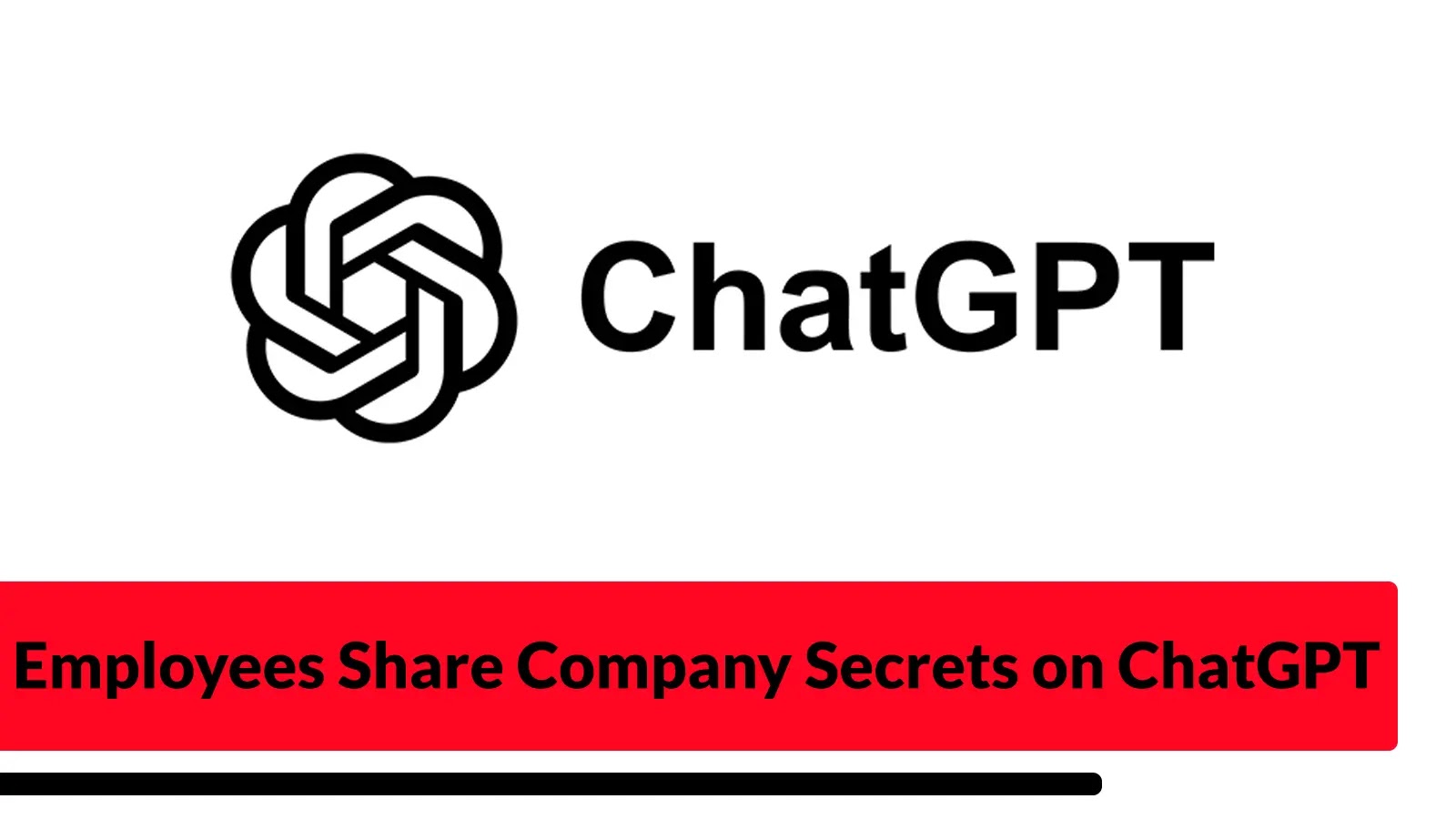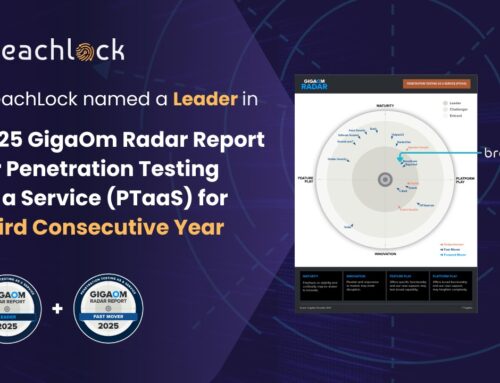
77% of Employees Share Company Secrets on ChatGPT Compromising Enterprise Policies
A disturbing trend is emerging from the heart of enterprise operations: your employees are sharing company secrets with AI. New research points to a significant breach of trust and policy, with a staggering 77% of employees confessing to inputting confidential corporate data into generative AI platforms like ChatGPT. This isn’t just a minor oversight; it’s a critical vulnerability that demands immediate attention from cybersecurity professionals and organizational leadership.
The implications are far-reaching, transforming generative AI from a productivity tool into a primary vector for sensitive data exposure. As a cybersecurity analyst, understanding the scope of this problem and implementing robust countermeasures is no longer optional – it’s imperative.
The Alarming Ascent of AI-Driven Data Leaks
The core finding, unearthed through comprehensive analysis of enterprise browsing telemetry, paints a grim picture. Employees, often unknowingly or perhaps underestimating the risks, are leveraging platforms like ChatGPT for tasks involving confidential information. This includes everything from proprietary code and financial figures to unreleased product details and sensitive client communications. The ease of use and perceived efficiency of these AI tools create a seductive trap, leading individuals to bypass established security protocols.
This isn’t an isolated incident; it’s a systemic issue impacting organizations worldwide. The research highlights that the sheer volume of data being fed into these public AI models creates an unprecedented risk landscape. Once confidential information enters these systems, the enterprise loses all control over its dissemination, retention, and potential misuse.
Why Employees Are Sharing – And Why It Matters
Several factors contribute to this widespread practice. Often, employees are seeking to enhance productivity, simplify complex tasks, or gain a competitive edge in their daily work. They might use AI to:
- Summarize lengthy confidential reports.
- Draft internal communications based on sensitive project details.
- Generate code using proprietary algorithms.
- Analyze confidential market research data.
The fundamental problem lies in the fact that data submitted to many public AI models can be used by the AI vendor for training purposes. This means your company’s intellectual property and sensitive client data could inadvertently become part of the AI’s general knowledge base, potentially exposing it to other users or, worse, to malicious actors who probe these systems. This mechanism, while not a direct vulnerability like a typical CVE, represents a severe data leakage risk that bypasses traditional security controls.
Understanding the Impact on Enterprise Policies
The 77% statistic underscores a profound disconnect between corporate security policies and employee behavior. Most organizations have strict guidelines against sharing confidential information with third parties. Generative AI platforms, when used incorrectly, fall squarely into this category. The consequences include:
- Loss of Intellectual Property: Proprietary algorithms, designs, and unreleased product information can be compromised.
- Regulatory Non-Compliance: Breaches involving customer data (e.g., GDPR, CCPA) or industry-specific regulations can lead to massive fines.
- Reputational Damage: Exposure of sensitive company secrets can erode public trust and stakeholder confidence.
- Competitive Disadvantage: Competitors could gain insights into strategic plans or proprietary processes.
- Legal Ramifications: Companies can face lawsuits from clients or partners whose data was inadvertently exposed.
The issue often stems from a lack of clear, actionable guidance on AI usage, or an underestimation of the risks involved by employees. Many may believe their queries are sufficiently anonymized or that the AI platform itself is a secure environment for proprietary data.
Remediation Actions: Securing Your Enterprise Against AI Leaks
Addressing this challenge requires a multi-pronged approach that combines technology, policy, and education. Ignoring this phenomenon is no longer an option.
Policy and Training Reinforcement
- Update Acceptable Use Policies (AUPs): Clearly define acceptable and unacceptable uses of generative AI platforms. Specify what types of information are strictly forbidden from being input into these tools.
- Mandatory Security Awareness Training: Educate employees on the risks associated with AI usage, including the potential for data leakage and the consequences of policy violations. Use real-world examples and emphasize the “training data” aspect of public AI models.
- Establish Clear Guidelines: Provide employees with clear operating procedures for using AI tools for business purposes, including approved platforms and data sanitization techniques.
Technical Controls and Monitoring
- Enterprise Browser Security: Leverage enterprise-grade browsers or browser extensions that offer advanced data loss prevention (DLP) capabilities. These tools can monitor and control what data is uploaded to external web services, including AI platforms.
- Content Filtering and DLP Solutions: Implement network-level content filtering and DLP solutions that can detect and block the transmission of sensitive data patterns to known AI service domains.
- AI Gateway Solutions: Explore using internal or controlled AI gateway solutions that can sanitize or redact sensitive information before it reaches public AI models, or route queries to private, secure AI instances.
- Network Traffic Monitoring: Increase visibility into outbound network traffic to identify unusual data transfers to AI service providers.
- Secure AI Sandboxes: For developers or data scientists, provide secure, air-gapped environments or private instances of AI models where sensitive data can be processed without external exposure.
Continuous Assessment and Adaptation
- Regular Audits: Periodically audit employee AI usage logs (where technically feasible and legally permissible) to identify potential policy violations or emerging risk patterns.
- Stay Informed: The generative AI landscape is evolving rapidly. Cybersecurity teams must continuously monitor new AI tools, their terms of service, and potential security implications.
- Employee Feedback Loop: Create channels for employees to ask questions and report concerns about AI usage, fostering a culture of security awareness and compliance.
Essential Tools for AI Data Leak Mitigation
While no CVE directly maps to this behavioral vulnerability, several tools can aid in detection, prevention, and mitigation.
| Tool Name | Purpose | Link |
|---|---|---|
| Zscaler DLP | Data Loss Prevention for cloud and web traffic | https://www.zscaler.com/solutions/data-loss-prevention |
| OpenText (Forcepoint) DLP | Comprehensive data protection across endpoints, network, and cloud | https://www.opentext.com/products/forcepoint-dlp |
| Netskope SWG & CASB | Secure Web Gateway and Cloud Access Security Broker for visibility and control | https://www.netskope.com/solutions/casb |
| Proofpoint Aegis (DLP) | Integrated DLP capabilities for email, cloud, and endpoint security | https://www.proofpoint.com/us/solutions/information-protection/dlp |
| Microsoft Purview DLP | DLP capabilities integrated within Microsoft 365 environments | https://learn.microsoft.com/en-us/microsoft-365/compliance/endpoint-dlp-get-started |
A Call to Action for Enterprise Security
The revelation that 77% of employees are transmitting confidential data to generative AI platforms represents a fundamental shift in the cybersecurity threat landscape. This isn’t theoretical; it’s a documented behavioral vulnerability with severe practical implications for data integrity, regulatory compliance, and competitive standing. Organizations must act decisively, integrating robust technical controls with comprehensive employee education and adaptable policies. Proactive engagement with the challenges posed by generative AI is no longer a strategic advantage, but a basic requirement for maintaining enterprise security and trust. The time to reinforce your digital boundaries is now.





